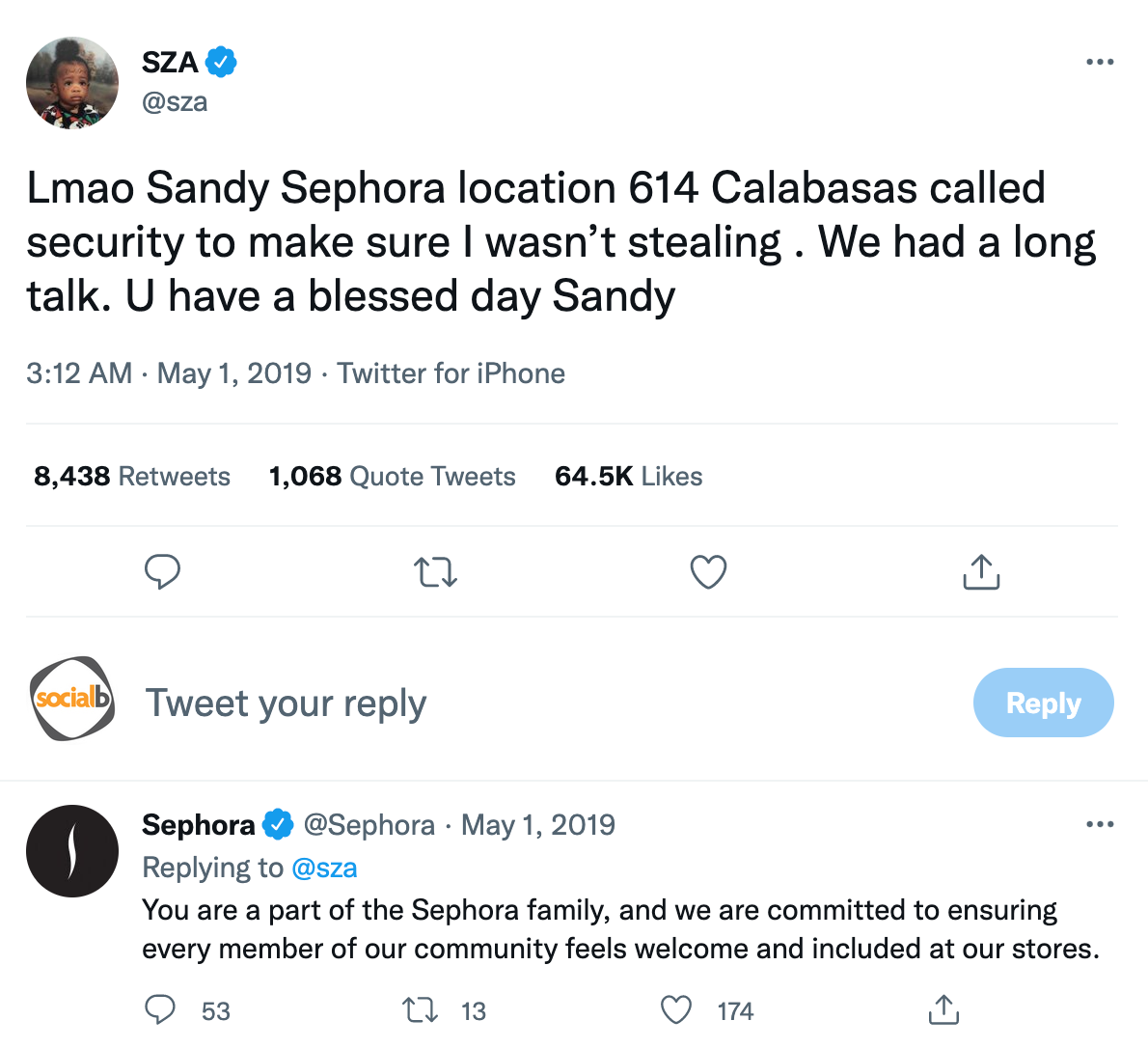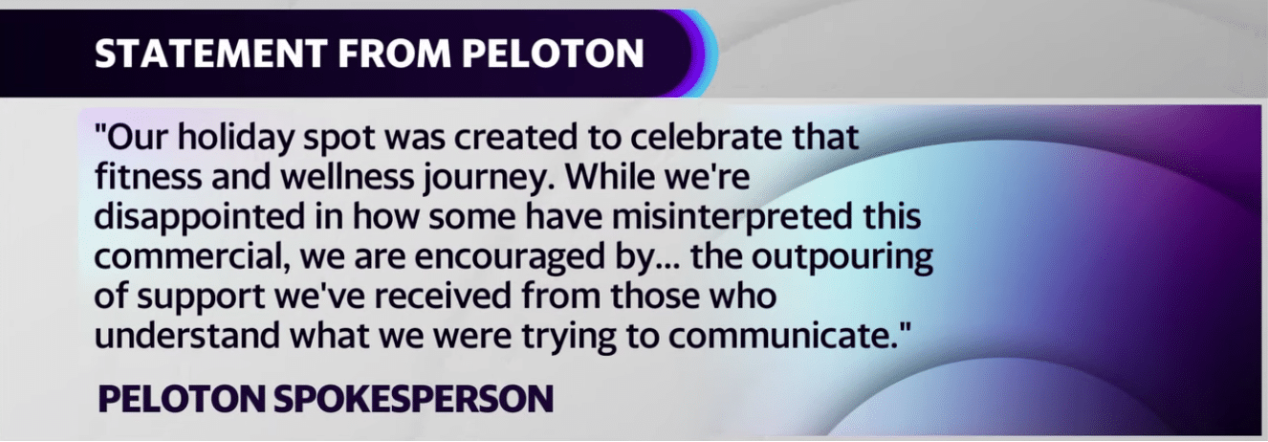Adopt the Right Positioning for Action
Save Time
When bad buzz starts, it’s a race against time.
However, your first mission is to save time!
Here are two possible scenarios:
Scenario #1: Many negative reactions are popping up, but you have not identified the source of the crisis.
Be transparent and reassure your audience. You have heard their displeasure and will do everything to understand what is going on.
To do this, write a “holding message” on the platform where the bad buzz started.
For the moment, it is not worth giving it too much visibility. You still need to show that your company is taking the issue very seriously and managing the situation.
Then once an investigation has taken place, you can make another statement. In the meantime, continue to moderate the comment section to track the progress.
Scenario 2: You know the origin of the crisis.
Gather all the facts and analyze the severity of the crisis, as seen above.
Use pre-written elements, such as the response elements you have prepared in advance, adapting them to the current crisis and the specific nature of the platforms.
Here is an example of an initial response:

Sephora quickly responded to SZA when she called them out for racial profiling at their Calabasas store. They followed up with an in-depth investigation and took action by closing their stores to implement diversity training.
Adopt Your Position on the Right Channel
Do you think you can manage the crisis on the platform where it started? Or have reactions begun to appear on other media channels?
You have several choices:
Share a post on the platform(s) concerned.
Write a press release and host it on your website.
Appoint a spokesperson in a senior position within your company to make a public statement.
Posting on social media allows you to open a dialogue with people, while a press release limits the exchange. When choosing a spokesperson, having someone in a senior position sends your audience a strong signal that you are managing the situation.
Your message should have three overriding elements:
Acknowledge the facts: Explain what happened, acknowledge your responsibility, and apologize if appropriate. Show empathy for those affected by the crisis.
The short-term solution: Detail what you have put in place in response to the problem and propose solutions.
The long-term solution: Announce the measures taken to ensure it does not happen in the future.
You should also translate your message if the bad buzz has crossed borders.
Offer a Space for Discussion
Watch for reactions to your announcement.
To centralize complaints, propose a point of contact within the company. This could be an email address, a dedicated phone line, a form on your website, or contacting you via private messages on your social networks.
Continue to track and analyze your social media comments and make sure the number of mentions doesn’t rise again.
Mistakes to Avoid
Here are a few tips to follow to avoid making the bad buzz worse:
Burying Your Head in the Sand
Keeping quiet and hoping things settle down is the worst possible response. However, you gain an advantage by acting before the situation worsens.
Persevering in Your Error
Not recognizing your errors and “sticking to your guns” could worsen the crisis.
Peloton saw a 10% crash in stock market value when it didn’t effectively apologize for a holiday-themed ad that got trashed across social media for being “cringeworthy.” Instead of properly apologizing, Peloton took an approach that pushed the responsibility back onto the audience for misinterpreting their message.


Apologizing Too Quickly
Remember that the vast majority of bad buzz disappears as quickly as it arrives!
Don’t take the blame for one internet user’s misunderstanding or relentless haters.
So don’t let pressure make you admit to anything without doing your research.
Similarly, do not accept consumer demands because you fear a crisis if they are not legitimate.
For example, a consumer asks you for a refund and blackmails you to get it (implied: he will complain online).
Passing the Blame Onto a Third Party
Blaming and shifting the responsibility to a third party (i.e., a subcontractor, supplier, or employee) does not send a positive signal.
On the contrary, ensure you have acknowledged your own responsibility before blaming others.
You can then take the necessary measures: terminate a partnership, dismiss, or sanction employees if appropriate.
Censorship
It is tempting to delete negative comments on your page or censor certain people by banning them.
But this is not an option as users will feel constrained in their right to share openly and will be more motivated to continue with their actions and cause you harm.
Many brands have been plastered all over the internet when users have taken screenshots and shared them en masse.
Samsung garnered greater attention when they tried to censor the content creator Ghostlyrich for publishing a video about their Samsung phone catching fire. Samsung faced backlash for trying to hide a safety concern that could impact other users. Ghostlyrich released a second YouTube video covering their attempt to hide the information, which was viewed over a million times.

On the other hand, you must delete the content at the root of the bad buzz. Not to hide it, but to acknowledge your mistake.
Hiding Behind Lawyers
Even if you are right, hiding behind your lawyers will put you in the spotlight.
In addition, the response times are very long and give the crisis plenty of time to develop.
It’s up to you to see if it’s really necessary. If you need legal advice, you can still send out a “holding statement” to communicate that you have taken action.
Chatting in Private Messages
Be very careful what you send in a private message.
You might consider pressuring journalists or influencers who have posted compromising content about you or trying to bring around a disgruntled customer via private messaging.
You’re risking having what you write shared for all to see. It’s hard to regain credibility after that.
The Deditex Case Study

Once you have your ideas in writing, compare them with Emily’s.
Let’s Recap!
You must act quickly during a crisis. However, be careful not to fall into the wrong pattern of behavior under stress:
Take the time to understand the situation. If necessary, post a holding message to show that you are aware of the problem. Then when you have more information, take up your position on the right channel.
To avoid making the situation worse, be careful not to lie, withhold information, or bury your head in the sand. Whether you are in the wrong or not, show that you are paying attention and willing to improve.
You will learn valuable lessons once the crisis is over. So don’t miss out on that opportunity!
